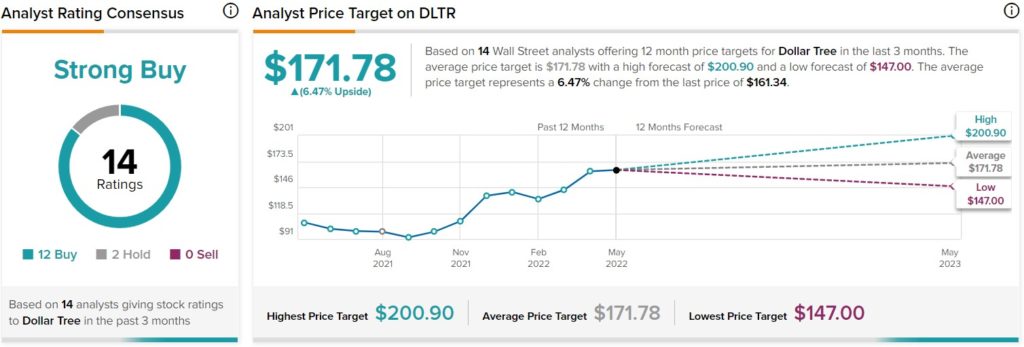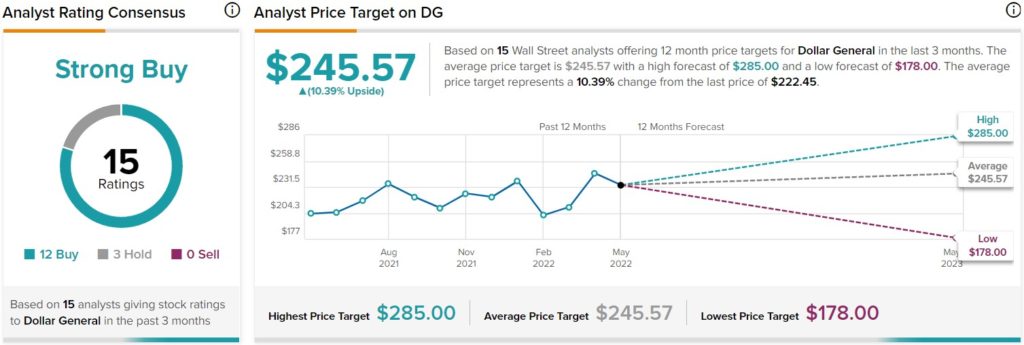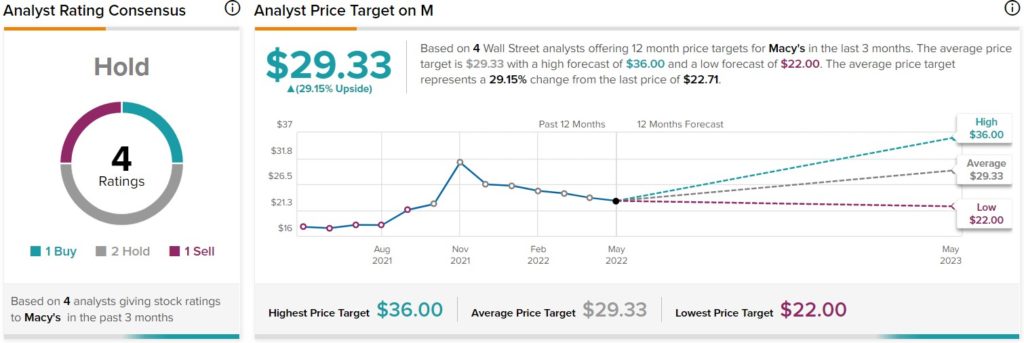Today was an unusual day for earnings reports, as five different U.S retailers declared earnings. These retailers were all across the spectrum. Discount retailers like both Dollar Tree (DLTR) and Dollar General (DG) declared earnings, as did more mid-range retailers, The Buckle (BKE) and Burlington Stores (BURL). Lastly, higher-end retailer Macy’s (M) also declared earnings.
While each retailer offered different results, the market reacted in much the same way: overwhelmingly positive. The last quarter proved a solid one for retailers of all stripes, but will this wave of positive feelings continue? That’s looking a bit less likely.
Right now, I’m bearish to bullish, depending on each company’s primary market base. I’m bullish on Dollar Tree and Dollar General, moderately so on The Buckle, and bearish on Burlington and Macy’s. The higher up you go, the less likely you are to find success, especially with the macroeconomic picture being what it is.
The Retail Roundup: Retail by the Numbers
While almost every company turned in some positive numbers in the latest quarter, the extent to which they did varied wildly.
Dollar General turned in earnings of $2.41 per share, which beat the Zacks estimates calling for $2.32 per share. However, even Dollar General fell against the previous quarter, which came in at $2.82 per share.
Dollar General’s revenue, meanwhile, came in at $8.75 billion. Zacks estimates looked for almost exactly that amount, as Dollar General came in just 0.5% higher than the estimates.
Dollar Tree posted even better results, as the company brought out $2.37 per share against Zacks estimates calling for $1.98. Dollar Tree managed to surpass its figures from this time last year, which came in at $1.60 per share.
Revenue was just as positive, as Dollar Tree posted $6.9 billion in revenue, 2.47% higher than the Zacks estimates. Comparable store sales actually doubled Street estimates on some reports.
The Buckle offered positive results as well, though perhaps not as positive as the dollar stores did. The Buckle came out with $1.12 per share in earnings. Revenue, meanwhile, was $309.1 million. That again beat the previous year’s figure of $299.1 million. The Buckle also reported a small climb in comparable-store sales, up 3.7% from the same time last year.
Macy’s posted much better results than expected. The company turned in $1.08 per share in adjusted earnings, while Refinitiv analysts looked for $0.82 per share. Revenue came in at $5.35 billion for the quarter, and Refinitiv projected $5.33 billion.
The lone exception to the mix was Burlington, which posted adjusted earnings of $0.54 per share. Zacks projections called for $0.64 per share. Revenue also proved a miss, as Burlington turned in $1.93 billion against Zacks projections calling for $2.01 billion.
By the Numbers, with a Few Small Variations
Taking a look at how the numbers shake out here suggests a clear path forward. The “dollar” retailers did perhaps the best overall, while The Buckle, the first major mid-range retailer, did well, if not spectacularly.
Macy’s managed to do well, thanks in large part to its higher-end retailer target. The only real outlier that bucked the trend is Burlington, which Forbes describes as an “off-price apparel and home product retailer.”
With inflationary conditions currently ruling the day, and a recession looking increasingly likely, the future for retail should likewise play out by the numbers.
The dollar retailers should continue to hold out well, as surging inflation drives shoppers to the lower-priced alternatives wherever possible. We already saw as much happen with Target (TGT) and Walmart (WMT) when they declared earnings just a few weeks ago.
Macy’s is proving to be a bit of an outlier here, but even this comes with a potential explanation. By targeting the higher-end consumer, Macy’s can expect to continue to sell. Inflationary pressures are, initially, less felt by higher-end consumers; they simply have farther to fall than the lower-end consumer does.
A man with $500 in his pocket simply doesn’t feel the impact of an extra $20 at the gas pump the way a man with $100 does. If it goes on long enough or gets deep enough, the wealthier man will feel the sting as well. By then, the less wealthy man will have adjusted his behaviors accordingly.
So Macy’s is likely safe for now, and if the increasingly-likely recession isn’t particularly deep or long-lived, then Macy’s may never feel the hit. Even if it does, its aggregate higher-end shopper market may only result in slight losses overall.
Dollar Tree and Dollar General are likely to benefit from inflationary environments and recessions as customers seek better value. The Buckle is also likely to derive some value from that as well, though to a lesser extent.
Only Burlington, with its mix of products and its slightly-higher-than-middle target market, is likely to get the worst of inflation and a recession all at once. Its customers aren’t so insulated from harder times, and lower-cost alternatives to its goods are likely more readily available.
Wall Street’s Take
Turning to Wall Street, Dollar Tree has a Strong Buy consensus rating. That’s based on 12 Buys and two Holds assigned in the past three months. The average Dollar Tree price target of $171.78 implies 6.5% upside potential.
Analyst price targets range from a low of $147 per share to a high of $200.90 per share.

Dollar General, meanwhile, also has a Strong Buy consensus rating. That’s based on 12 Buys and three Holds assigned in the past three months. The average Dollar General price target of $245.57 implies 10.4% upside potential.
Analyst price targets here range from a low of $178 per share to a high of $285 per share.

The Buckle has no analysts giving it coverage in the last three months. Therefore, no recent price target exists for this company.
Next, Burlington Stores has a Strong Buy consensus rating based on 15 Buys, two Holds, and one Sell assigned in the past three months. The average Burlington Stores price target of $247.89 implies 46.1% upside potential.
Analyst price targets for Burlington range from a low of $175 per share to a high of $350 per share.

Finally, Macy’s has a Hold consensus rating. That’s based on one Buy, two Holds, and one Sell assigned in the past three months. The average Macy’s price target of $29.33 implies 29.2% upside potential.
Analyst price targets for Macy’s range from a low of $22 per share to a high of $36 per share.

Concluding Views
The retail market is a complex animal. Each store has its own target market. Some of these markets overlap. Elements within each market will seek out alternatives based on their individual circumstances. The end result is, roughly, like trying to pile sand. There are only so many rigid core concepts here to provide structure.
Yet knowing what we know so far, and performing a bit of generalization accordingly, produces noteworthy results. Dollar Tree and Dollar General are likely to do well in the environment we’re facing now, so I stand bullish on them.
The Buckle, being mainly a clothing store, has certain minimums it can’t break. However, it can do well within this market. Clothing being a necessity, it’s likely to do reasonably well.
Macy’s has a high-end consumer market, and its shoppers have further to fall to the point where they don’t shop or seek out alternatives. That still leaves me bearish, but only cautiously so. It’s not likely to bring in a lot of new shoppers from other spectra of earnings.
Burlington Stores is the most likely to fail in this environment. With shoppers that aren’t quite in the high end but are also able to better find substitute goods, it has the worst aspects of Macy’s. It also has higher minimum levels than The Buckle, which leaves it less able to adapt.
Just how the broader retail market will turn out is anyone’s guess right now. It depends heavily on how the macroeconomic picture comes into play over the next several months. For right now, though, it’s starting to look like the cheap stores will rule the day, followed closely by the stores that cater to those for whom cheap is a relative term.
Read full Disclosure
















